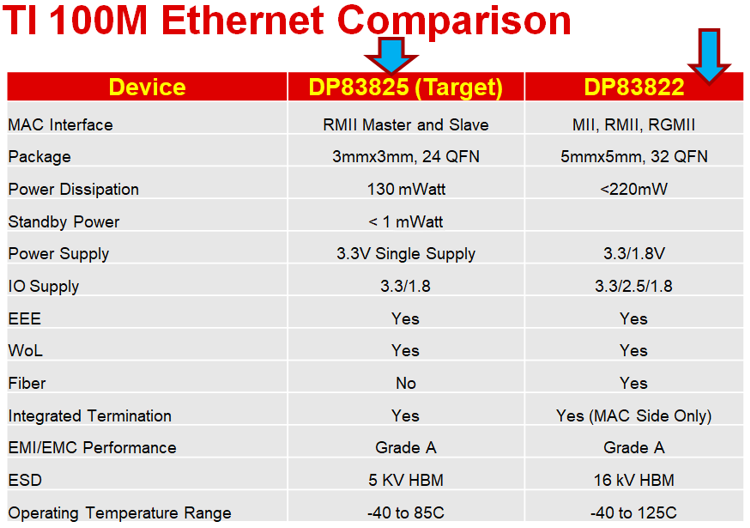SNLA343A April 2020 – July 2021 DP83825I
- Trademarks
- 1Introduction
- 2Device Overview
-
3Merging DP83825 Onto Sitara Steps
- 3.1 Step 1 – DP83825 vs. DP83822
- 3.2 Step 2 – Check 8710A Pins with AM335
- 3.3 Step 3 – De-populate the LAN8710A from AM335 EVM - BBB
- 3.4 Step 4 – Check the AM335 (BBB) RMII Connection Pins
- 3.5 Step 5 – Check the DP83825 Connection Pins
- 3.6 Step 6 – PinMux Tool To Generate DTS/DTSI Files.
- 3.7 Step 7 – DP83822 Code Base Review
- 3.8 Step 8 – DP83825 Code Base Review / Patch Adaption
- 3.9 Step 9 – Patch the Linux uboot/kernel
- 3.10 Step 10 – Change the Menu Config
- 3.11 Step 11 – Building the Components (menuconfig/dtb/zimage)
- 3.12 Step 12 – (Optional) Important Fix for DTS Build
- 3.13 Step 13 – Copy the Built Files onto the SD Card
- 3.14 Step 14 – Register Checking for the DP83825.
- 3.15 Step 15 – Linux Command To Assist The Debug
- 3.16 Step 16 – Linux ethtool Command Dumps (example)
- 3.17 Step 17 – Linux dmesg to Check the Ethernet Driver Status.
- 3.18 Step 18 – Testing Result with Detail Log Analysis (Success Case).
- 3.19 Step 19 – YouTube Demonstration Video
- 4Required Hardware and Software
- 5References
- 6Revision History
3.1 Step 1 – DP83825 vs. DP83822
Use the DP83822 driver and modify it to support the DP83825. You need to verify the difference between these two parts.
Figure 3-2 shows the difference between the TI Ethernet Phy. DP83822 is MII/RMII/RGMII. DP83825 is RMII only.
The blue arrows on the Figure 3-2 indicate the Ethernet 10/100 interface has two options: MII / RMII.
We selected the RMII, because the DP83825 has only RMII.
 Figure 3-2 TI Ethernet Phy
Comparison
Figure 3-2 TI Ethernet Phy
Comparison